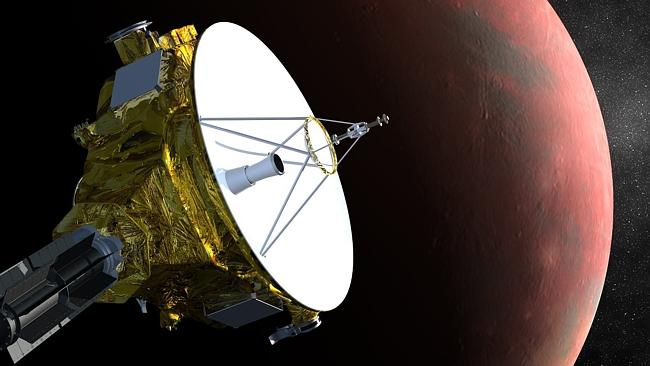NASA’s New Horizons probe closes in on Pluto for historic encounter
IT may have taken nine years to get there, but NASA is close to giving humanity its first high-resolution view of the icy world of Pluto.

A NASA probe the size of a grand piano is about to give humanity its first high-resolution view of the icy world of Pluto.
In what has been the furthest space mission ever undertaken, the New Horizons probe has travelled more than 4.8 billion kilometres in a journey lasting almost nine years.
With still 200 million kilometres to go, the first images from the spacecraft’s long-range cameras are expected to only show little specks of light against the stars.
New Horizons has also been taking detailed measurements of the dust and electric particles in the dwarf planet’s environment since mid-January.
NASA scientist Alan Stern said all of the data obtained will be critical in helping to align the probe properly for a historical fly-by encounter in July.
“The sensitive LORRI long focal length camera aboard New Horizons will begin imaging the Pluto system for navigation purposes,” he said.
“This will yield dozens of images that our navigation teams will analyse for positional information about Pluto and Charon against star fields, allowing us to home in more accurately than by radio navigation from Earth alone.”
The closest approach of the spacecraft will take place on 14 July and will come within 12,400 kilometres of Pluto’s surface.
From that distance, New Horizons will be able to determine the atmosphere’s complete composition and determine how Pluto’s atmospheric pressure and temperature vary from the surface to high altitude.
Until now, the best pictures astronomers have managed to capture of Pluto came from the Hubble Space Telescope more than a decade ago.
The high-definition images captured on this mission will become available to the public later this year.



